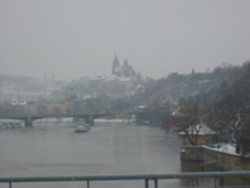
Prague in the Fog
The Prague Balance Sheet
Travel is one of those mysteries I will never understand. Certain cities you know you will like ahead of time (Reykjavik, Rio); some will take you by surprise (Stockholm). Others, like Prague, are cities you know you should like but…
- The Czech language is made up entirely of consonants, yet is enough like the Polish of my grandmother to give me a craving for stuffed cabbage and a yearning for those light, feathery, Warsaw dumplings she made, my mother made, and I can make.
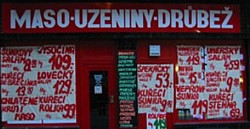
- After trying several beer-hall meals (we wanted real food, not fake Italian), Czech cooking seems to be based on delicious gravies sustained by the world’s worst dumplings. Regulation beer-hall dumplings are hockey puck-size, Wonder Bread sponges. This bread dumpling, constructed of gluey boiled dough, sticks to the roof of your mouth forever. No amount of Pilsner will get it off. Perhaps the idea is that once in place, the permanent bread dumpling allows you to absorb flour-thickened and smoky-ham flavored pork, beef, or boar juice without the addition of superfluous carbs.
- Beer is the tap-water of Prague. In a beer hall that has been in operation since the 16th century, we saw one client down 10 steins of Pilsner as an aperitif. The entrée was a double order of sauerkraut and dumplings and…more beer. On his two trips to the gents’, he did not once stagger. I think the dumplings were ballast.
- Because of theatrical lighting and poet and past president Václav Havel adding a “changing of the guards” ritual, the famous Prague Castle is now a blow-up of the Disneyland castle. At night, the empty, sloping alleyways reminded us more of stray scenes from the movie version of Mission Impossible than the Kafka or Meyrink atmosphere we expected. Where is Tom Cruise? No self-respecting Golem would find much lurking-space here.
- Aside from a sidewalk mosaic advertising a restaurant called the Ur Golema and Golem key-chains, Golem pop-up books and Golem drain-cleaners, I never saw the Golem.
The Other Side of My Tourist Balance Sheet
- The period Cubist railing in the stairwell of the Cubist Museum that now occupies The Black Madonna Department Store. The much praised building is only a mildly Cubist façade. Decorative facets alone do not a Cubist building make. Nevertheless, the Cubist Museum collection is worthy of note: it features Czech Cubism (1910-1919). Yes, there was such a thing. While New York was still not even struggling with Gothic skyscrapers, Prague was going wildly Cubist. Pave Jana’s 1912 Cubist chair? Great. Stage-set designs and drawings of proposed buildings? Great. Paintings? Well-worth further investigation, because of the Czech addition of allegorical content and the idea that you grasp the essence of motion then freeze it in time. Czech Cubism is really Czech Futurism.
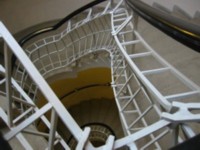
- Also a fine survey of the work of Cubist Vlastislav Hofman at the fully restored art nouveau Municipal House. Elsewhere bought a remake of his iconic Cubist ashtray, which according to the artist himself (as quoted in the printed insert) is “…a paring down and reduction of matter to unleash its essential internal forced making it possible to capture in abstract form its natural momentum.” However, as some have already pointed out, Cubist furniture and so forth is clunky and generally had to have hollow tips to prevent it from being too heavy. Chairs with sharp edges, looking as if they are about to tip over; desks with dangerous drawers. But it can’t be denied that these Czechs were the first and probably only ones to apply real Cubism — as opposed to what later came to be called Art Deco — to architecture and the decorative arts.
- The three-headlight 1947 Tetra automobile in the Museum of Industry.
- Lunch at the elegant Flambé Café. Aroma, aroma.
- A wonderful, ultramodernist Adolph Loos house in some ritzy neighborhood, passing it by on our way to a Korean restaurant.
- The wall-to-wall, floor-to-ceiling ceramic tiles of the Hotel Imperial Cafe, which redeems this museum of bad food. A giant compote of inedible day-old donuts is available for purchase to throw at people in your party or at other customers. The donuts, included with coffee, are, in fact, born inedible. I am not making the donut fight up. Our artist friend was actually splattered by donut jelly during one of these donut brawls.

- Virtually no cars downtown, so there are no parking lots taking up precious tourist sites. The trams and the subway are cheap and perfect. If a tram does not keep to schedule, it’s the driver who gets fined.
- Except for high-end restaurants, food is half the price of New York. Supermarket prices are also half. Too bad Czech incomes are less thanhalf.
- Czech-language production of Mozart’s Magic Flute, with English and German supertitles, in the perfect 1783 Estates TheaterwhereDon Giovanni debuted in 1787. “Praguers understand me,” said Mozart. If you’ve seen Milos Forman’s misinformed Amadeus, you’ll recognize this neoclassical gem.
- My peak experience was not the Old Jewish Cemetery and Rabbi Loew’s tombstone, although I too placed a pebble there. No, the cemetery merely reminded me of all the Jews who once lived in the Josef quarter — in 1708, they were one quarter the population of Prague; before World War II, one fifth. Now there are, according to one guidebook, only 1,500 left. Rabbi Loew is the famous 15th century kabbalist (true) and creator of the Golem (legendary). In the nearby New-Old Synagogue (built in 950!) you can see the chair he sat in. That chair is where he is, not the tombstone, which he never touched and probably has been moved more than a few times, given the twelve-layer density of dead bodies in the cemetery.
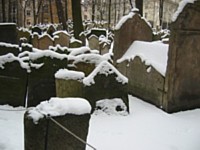
The Appliances of Prague
I was in Prague not as a tourist — although I am a tourist everywhere, even in New York — but on assignment. I was there to write a piece for American Craft magazine about Karen LaMonte, an American living in Prague. Her exhibition of cast-glass clothing was at the Czech Museum of Fine Arts, in the cavelike cellar of a Romanesque building. The Czech Museum of Fine Arts is the Czech Smithsonian and stages art exhibitions in various historic buildings.
It was LaMonte and her partner, Steve Polaner (also American), who brought us to two Czech art openings. The first was at Futura, the P.S. 1 of Prague that opened in 2003 in Smichov just 10 minutes from the city center. It’s in an old factory building with a warren of rooms and catacomb cellar spaces. Fortunately for me, “Insiders: The Unobtrusive Generation of the Late 1990s” (to August 5) surveyed your basic Prague postminimalism as exemplified by 11 artists. I did like the pencil wall-pieces by Jan Nálevka. Otherwise, Krištofa Kintera was the standout with his strange sex-toy “appliances” he had placed in various shop windows (1997-1998).
Except for the preponderance of unshaved male jaws (a Prague fad?), you could have squinted and thought you were at an opening in Williamsburg. My friends looked through the mob for Kintera, whom I wanted to meet, but came back to report that he was stressed out by some problem with his one-man show opening downtown the next night.
“We’ll take you to a few openings,” said our American friends, when we first arrived. No problem.
The opening downtown turned out to be of new work by Kintera in the very classy Galerie Jiri Svestka. The reason for Kintera’s stress was immediately apparent: two of his mechanical pieces had for some unknown reason stopped operating. Judging by his look and his chain-smoking outside the gallery entrance, he was still pretty stressed, but the show was a success. I recognized a number of faces from the Futura opening the night before. Here, as in the museums there, were jolly retirement-age guards.
All of Kintera’s newly minted sculptures, one to a room, involved sounds and movements, save I Can’t Sleep (basically a wig in a sleeping bag from which creepy smoke emerged). All other works, like his early “Appliances,” were sexually suggestive. The elegant and slightly threatening Something Electric was a wire plugged into a socket with the business end creating a repeatedly zapping electric arc. Children beware! It’s Beginning was an electrified coconut knocking the floor. Unhappy Coincidence was a union of a computer mouse and a ski pole. There was also an electric bread knife with shoes humping a watermelon.
As an outsider trying to understand Kintera the Prague insider, I wondered if the great Czech animator/movie director Jan Svankmajer had been of any influence. Svankmajer’s Otesanek (2000) is about a childless couple who adopt a curiously childlike and eventually voracious tree stump. His claymations and his stop-motion animations are classics. The one-minute Meat Love has been summarized as “Two piece of meat are cut, fall in love, have tricky meat sex and then are cooked up for our consumption.” Like Czech Cubism, Czech Surrealism has yet to be fully explored.
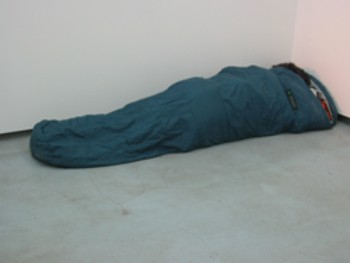
Kristofa Kintera, I Can’t Sleep, 2004
And the Results Are…
Would I visit again? Yes, but in warmer months, exclusive of what is now a tourist-invested summer. I would certainly go there for any kind of art project that came up. The Euro has not yet taken over, so it’s cheap enough, and in spite of what I’ve written, it is charming enough. If you had to choose among Chicago, Toronto, Melbourne or Prague, which would it be? I’d choose Prague.
Nevertheless, on some deep somatic level I seem to have a problem with landlocked countries. The Czech Republic, if you take away Moravia, is what was once called Bohemia. We know from Shakespeare, who was being sarcastic when referring to a seacoast of Bohemia, that there is no seacoast. The U.N. lists 30 landlocked countries. But for some reason they leave out the Czech Republic, Tibet and Austria. I guess rivers count as seacoasts. But not in my book.
In case you were thinking of moving to Uzbekistan or Liechtenstein, please be informed that they are double-landlocked, i.e., entirely surrounded by other landlocked countries. Nowadays, one is always looking for options, but being doubly landlocked sounds too claustrophobic. I even have trouble with landlocked states like North and South Dakota. The unstated plus, of course, is that if you are landlocked, at least you can’t be invaded by way of the sea.
